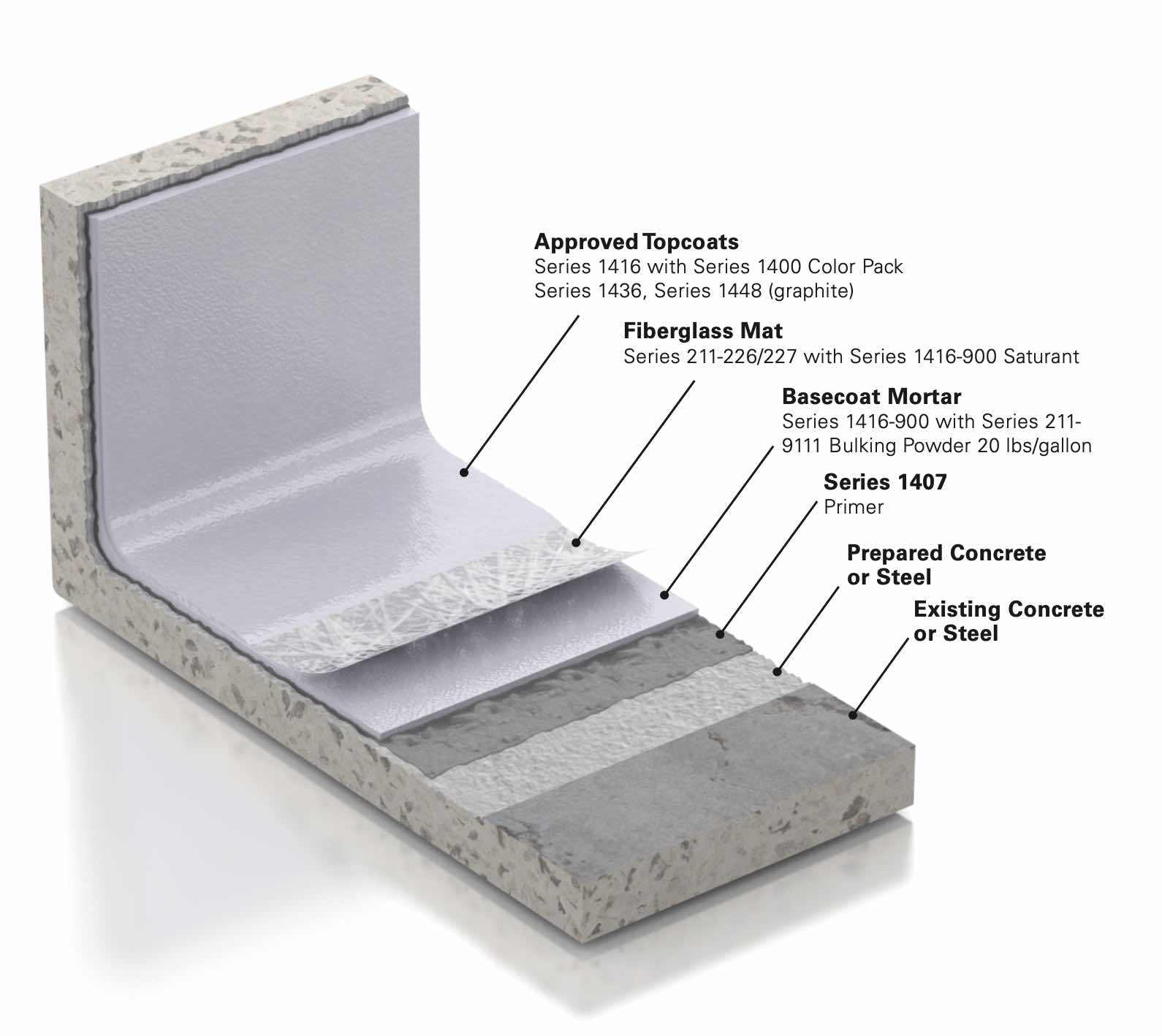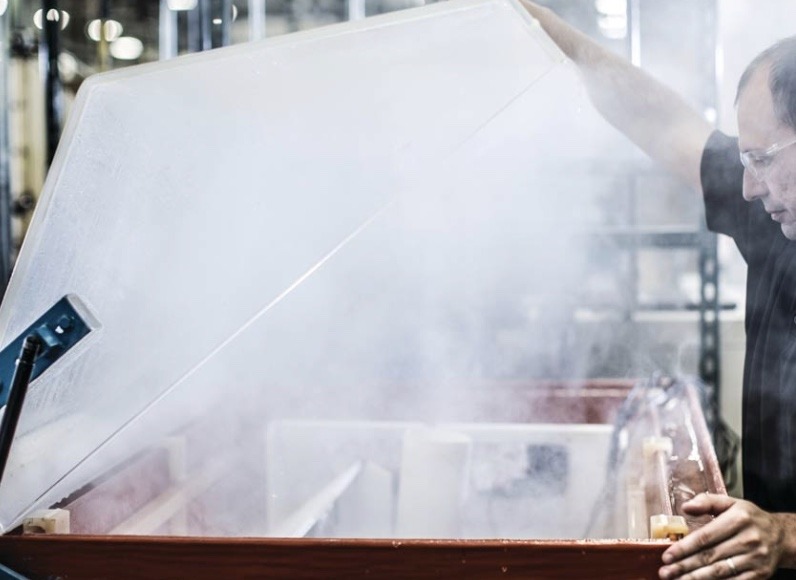
The Science Behind High Performance Coatings
The science behind high performance coating formulations involves a careful selection of ingredients and chemistry to get the desired outcome.
- High Performance Coatings
The Science Behind High Performance Coatings
High performance coatings are formulated using a combination of scientific principles and advanced materials to achieve specific functional properties and performance characteristics. The science behind high performance coating formulations involves a careful selection of ingredients, understanding the chemistry involved, and optimizing the formulation for desired performance. Let's explore some key aspects of the science behind high performance coating formulations:
What goes into the formulation:

1. Resin Selection:
The choice of resin is fundamental to coating formulation. Resins, such as epoxies, polyurethanes, acrylics, or silicones, provide the coating's primary protective properties. Different resins offer specific characteristics, such as corrosion resistance, chemical resistance, flexibility, adhesion, or UV resistance. The selection of the appropriate resin depends on the intended application, the environmental conditions, and the desired performance requirements.
2. Pigments and Fillers:
Pigments and fillers are incorporated into coating formulations to enhance specific properties. Pigments provide color, opacity, and UV stability, while fillers contribute to properties such as abrasion resistance, hardness, or improved barrier performance. The selection and incorporation of pigments and fillers are carefully balanced to achieve the desired coating attributes without compromising other properties.
3. Solvents and Carriers:
Solvents or carriers are used to dissolve or disperse the coating components, facilitating application and ensuring proper film formation. The selection of solvents takes into account factors such as evaporation rate, viscosity control, compatibility with the resin system, and environmental considerations. Increasingly, there is a focus on formulating water-based or low-VOC (volatile organic compounds) coatings to minimize environmental impact and address health and safety concerns.
4. Crosslinking and Curing:
High performance coatings often require a curing process to achieve their desired properties. Crosslinking agents, catalysts, or curing agents are added to the formulation to promote chemical reactions that result in the formation of a durable, tightly bonded network within the coating matrix. This curing process enhances properties such as hardness, chemical resistance, adhesion, and overall coating performance.
5. Additives and Modifiers:
Various additives and modifiers are incorporated into high performance coating formulations to fine-tune their properties and performance. These additives can provide functionalities such as improved flow and leveling, anti-foaming properties, UV stabilizers, anti-microbial agents, or surface tension modifiers. The selection and incorporation of additives are based on specific performance requirements and the desired characteristics of the final coating.
6. Testing and Optimization:
Formulating high performance coatings involves rigorous testing and optimization to ensure that the desired performance criteria are met. Coating manufacturers conduct extensive laboratory tests and field trials to evaluate properties such as adhesion, corrosion resistance, chemical resistance, hardness, flexibility, and durability. These tests help refine the formulation and adjust the ingredient ratios to achieve optimal performance under real-world conditions.
Why Performance Coatings Matter
Extended Asset Lifespan

The primary function of high performance coatings is protection against deterioration. Bridges, pipelines, and industrial equipment face constant exposure to moisture, chemicals, and mechanical stress. Quality coatings extend service life dramatically, often by decades.
Sustainability Impact
While not always recognized as sustainability tools, performance coatings significantly reduce resource consumption by:
- Preventing premature replacement of materials and structures
- Reducing maintenance requirements
- Enabling more efficient operations (e.g., anti-fouling coatings on ships improve fuel efficiency)
- Allowing the use of lighter-weight materials that would otherwise deteriorate quickly
Safety Critical Applications
In many scenarios, coating failure isn't just expensive—it's dangerous. Aircraft components, offshore platforms, and chemical containment systems rely on specialized coatings to maintain structural integrity in extreme conditions.
Economic Implications
The global cost of corrosion alone exceeds $2.5 trillion annually. High performance coatings represent one of the most cost-effective strategies for addressing this enormous drain on the economy.
What is The Future of Protective Coatings?
Research continues advancing coating capabilities through:
- Self-healing formulations that automatically repair minor damage
- Ultra-thin graphene coatings with exceptional barrier properties
- Water-based (not watered down) technology
- Biomimetic approaches inspired by natural protective systems
- Environmentally friendly alternatives to traditional solvent-based systems
Conclusion
High performance coatings exemplify how advanced materials science solves practical problems across industries. Their development requires deep understanding of chemistry, surface science, and application-specific requirements. While often invisible to end users, these sophisticated formulations silently protect the infrastructure we depend on daily.
In a world facing resource constraints and sustainability challenges, the importance of technologies that extend asset lifespans and improve operational efficiency cannot be overstated. High performance coatings deliver these benefits through continuous innovation and rigorous engineering. Through scientific research, formulation optimization, and ASTM testing, high performance coatings are developed to meet the stringent requirements of various industries and applications.
For more information, contact us at High Performance Coatings. We can help develop a coating specification for you specific end use conditions.

Vinyl Ester Systems (VE): The Solution for...
Vinyl Ester systems represent advanced polymer...

What is ASTM B117 (Salt Fog) Testing and Why is...
What is ASTM B117 Salt Fog Testing?
ASTM B117...
